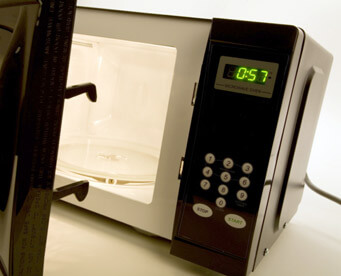
When it hit stores half a century ago, the microwave oven dramatically changed meal preparation by reducing heating times considerably. Today, it's a staple part of most kitchens. Routine care will keep your microwave oven operating well for many years.
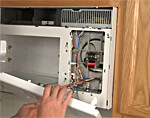
Despite its small size compared to other home appliances, the microwave oven can store thousands of volts of electricity in its high voltage capacitor, even after the microwave oven has been unplugged. That's more than 30 wall outlets combined.
Replacing electronic parts in a microwave oven can be extremely dangerous. This should be left to a repair professional. However, the cost to purchase a new microwave is often comparable to the cost of replacement parts so a new unit is most often the best solution. Non-electronic microwave parts like door latches, glass trays and their associated parts are inexpensive and easy to replace.
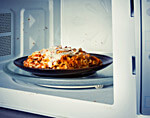
Clean the inside of your microwave frequently. Food particles and splatters absorb some of the microwave energy while the unit is operating and may cause burns and other damage to the microwave. You can clean the interior with a microwave oven cleaner.
If you're in the market for a new microwave, we recommend a stainless steel interior. It's easier for cleaning purposes. We recommend this stainless steel cleaner and microfiber cloth to clean the interior.
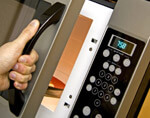
Take care not to slam the door. Latch mechanisms on microwave ovens generally have three switches that must close in a particular order. Slamming the door may alter the order of the switches' closing, resulting in a blown, internal fuse.
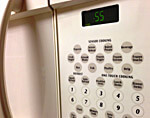
This will enable the microwave to heat food more effectively and conserve energy.
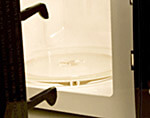
Some people have mistakenly run their microwave oven without food, simply for use of the timer while cooking elsewhere in the kitchen. This may damage the microwave oven. With the absence of food or liquid, the microwave energy is not being absorbed and will bounce around inside. This can cause the magnetron to overheat and fail; this is a very costly repair.
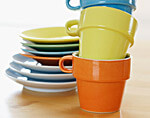
Only place dishware that's stamped as microwave-safe into a microwave oven. Many glass products are not microwave safe. Never put in dishware with metal parts or gold or silver plating. Never put in aluminum foil, even in small amounts If the dishware you are using to heat your food gets exceptionally hot, or hotter than the food you are trying to heat up, it is absorbing the microwave energy and is not microwave safe.

Plug your microwave oven into a surge suppressor to protect its circuitry from damage during voltage spikes or surges caused by lightning and other power fluctuations.
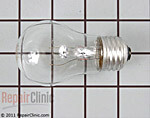
You can solve many common problems with microwave ovens with touch-up paint and by replacing turntables, light bulbs, charcoal filters and more. With your microwave's model number, head to our repair help information.
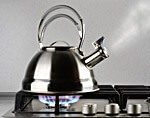
Heating water in a microwave oven is not advised due to risk of a condition called "superheating." This condition can cause water to be much hotter than boiling but not appear to be boiling. As soon as the cup or glass is touched the water can suddenly and violently burst, causing burns to anyone nearby. It is better to heat water on a stove-top kettle.
No. As long as the microwave oven door remains closed when in operation, there is no danger to you from the microwave energy. It is, however, important that you do NOT attempt internal/electronic parts repair. Due to the high risk of electrocution, only repair professionals should attempt such repairs.
Some studies indicate a possibility for health problems with prolonged exposure to microwave energy. However, most research has shown that it's very natural to be exposed to low-level microwaves. We are regularly exposed to microwaves in the atmosphere – without any adverse or lasting effects. Microwave ovens are required to meet stringent federal government guidelines to prevent any leakage issues.
There are some test kits available at home improvement stores. However, if you have concerns about leakage, it's best to contact a repair professional for an inspection.
Microwave energy penetrates foods more deeply than during conventional heating. The water molecules inside of the food heats as quickly as those on the outside. When heated, water expands so skinned or shelled foods explode to accommodate the increasing size of the water molecules. To avoid overheating these types of foods, use your microwave's preset cooking feature for more precise cooking times, or reduce the power level during cooking.
The higher the wattage, the faster the microwave will heat food. Look for models with sensor cooking options to make heating more precise. Check out Consumer Reports and other credible sources for ratings on the latest models.
No. Your microwave oven should perform as well as it did the day you brought it home.
Because the microwave energy is beamed into the interior of the microwave and then dispersed by a metallic "stirrer," or by a rotating carousel, the pattern of the energy is usually consistent. However, certain portions of the food may overcook (creating tough spots) and others will undercook. A microwave oven with a carousel is far better at cooking the food consistently. It also helps to use the microwave's preset cooking feature.